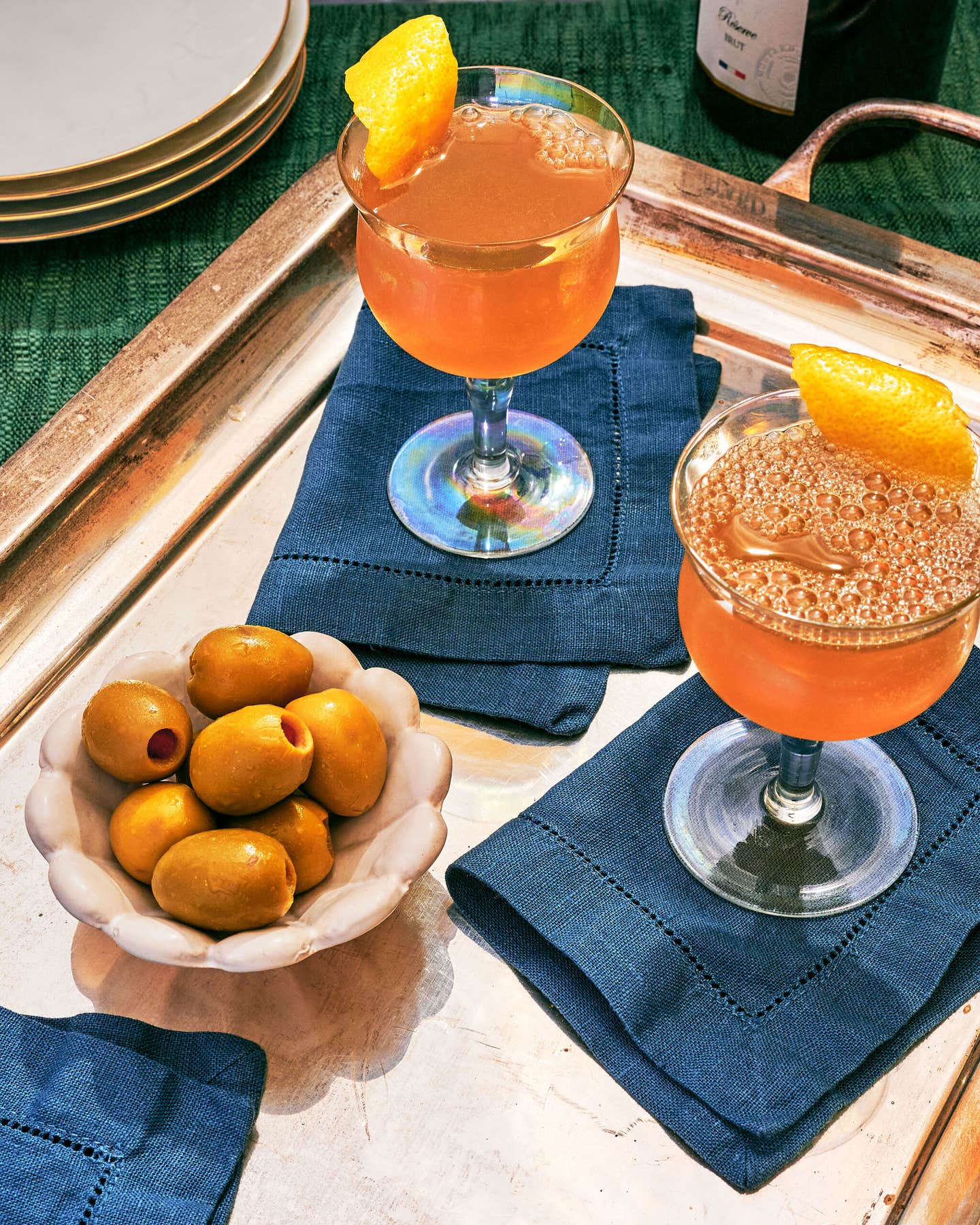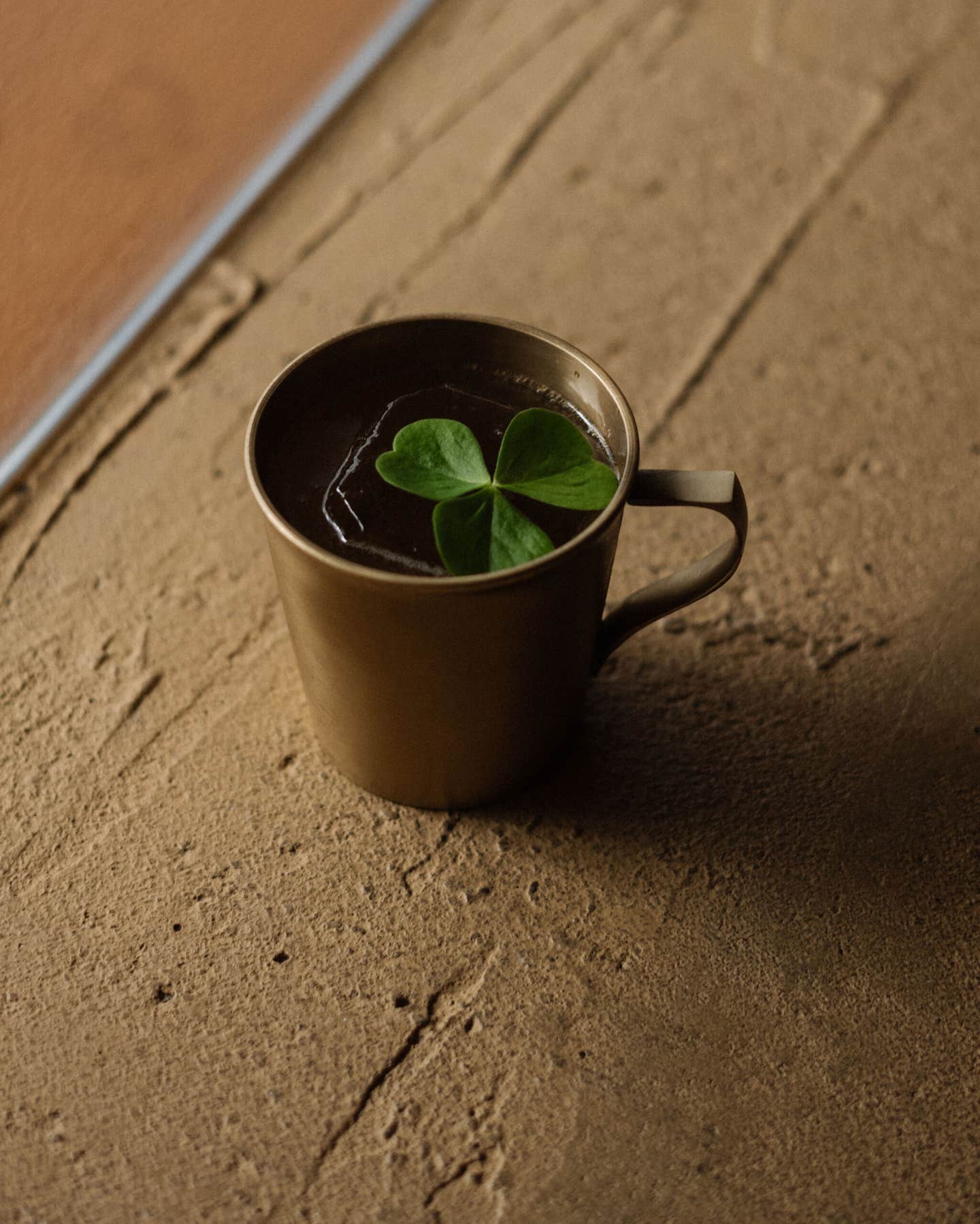
Big Red Wine
A blue sky spread over the Valpolicella region in October 1995, like a painting someone had hung. Along the Strada del Vino, which cuts a path through the cluster of hills above the romantic city of Verona, the sun warmed the newly stripped vines. Such splendid weather so soon after the harvest might have seemed ironic following the chilly summer this corner of northeastern Italy had just endured. Yet the winemakers were rejoicing, crossing themselves in the hopes that their luck would hold.
The Valpolicella region's most famous wine, itself called valpolicella, is a light, fruity, pleasantly drinkable red. Its most serious wine, closely related in origin, but spiritually a world apart, is recioto della valpolicella amarone, or simply amarone—which might be translated as "the big, bitter one". When I first tried amarone, at a wine bar in Verona, I found it to be as flavorful as barolo and as strong as vintage port, but hardly tannic. Its translucent shade of garnet belied its intensity, and I thought I detected a hint of carbonation. Amarone, I later learned, is considered a vino da meditazione—an Italian notion that means something like "a wine to inspire serious discussion among friends". In Verona, it is often consumed with the cheese course during formal dinners—though many lovers of amarone say that its perfect match is pastissada de caval, horse meat marinated and stewed in red wine, a Veronese dish dating from at least the Middle Ages. Everyone, however, agrees on one thing: It is unique. Important and expensive—a connoisseur's wine—it's not the type of thing you order when you don't know what you want.
The term recioto is probably derived from the local dialect word recie, or ears, referring to the upper lobes of the grape clusters (which are thought to have the sweetest grapes). Instead of being crushed and pressed immediately after they're picked, as they would be for valpolicella, grapes from these clusters are treated in a special way, which yields special results: They're left to dry on bamboo racks or in low-sided wooden boxes in well-ventilated rooms for at least three months. This process, called appassimento, concentrates their sugar content (and increases the amount of alcohol they'll yield) and dramatically intensifies their flavor. That's why the weather is so important: If there's a wide temperature swing between day and night, and not too much humidity, the grapes will shrivel perfectly. If there's too much humidity, they'll rot before it's time for them to be pressed in January, and there will be no recioto, and thus no amarone—which, as Hugh Johnson neatly put it, is recioto which has been allowed to ferment "to the bitter end".
As important and expensive as amarone may be, it is not big business. Because demand is limited and production costs are high, even the largest producers turn out no more than a few thousand cases annually. Still, no one seems to want to give it up. "I make it because it's typical of the Veneto, and also because it's our most prestigious wine, the top of the line," noted Gianni Righetti, the enologist for the Luigi Righetti winery in Valgatara, whose amarone tastes of dried cherries and rich, dark soil.
To watch him make it is to step back a century. Up a flight of stairs, in a ramshackle shed, newly picked grapes are stacked in racks, looking a bit like blueberries. Windows are thrown open for the breeze. Righetti warns me to mind a loose step on the way down. "It's been that way for a hundred years," he says of the step—but he could have been referring to the entire operation. Righetti was born at the winery, and his family still lives there.
In some metaphoric way, amarone tastes like that scene. The wine is rooted in the vineyards of Valpolicella; its grapes—the traditional local cultivars called corvina, molinara, rondinella, rossignola, and negrara—hardly grow anywhere else. "If transplanted, they leave all their glory and lose their quality," wrote Pliny the Elder. Masi's Sandro Boscaini, who is to amarone what Angelo Gaja is to barbaresco and Piero Antinori is to chianti, has a copy of Pliny's quote on the wall of his winery in Gargagnago.
An accomplished historian, Boscaini has presented papers on amarone's origins at the annual VinItaly wine fair in Verona. He started exporting it regularly to the U.S. in 1970, after he and his brother took over the 200-year-old family business from their father. Back then, amarone had a place on Italian restaurant wine lists in America, along with low-priced valpolicella and chianti in straw-covered bottles. Later, pricey new-wave barolos and barbarescos and the so-called super-Tuscans—many of them based on cabernet sauvignon—helped establish Italy's reputation for top-quality wines in what might be called the international style. Amarone, meanwhile, was all but forgotten.
"I was lucky," says Boscaini, "because you can't make an amarone that tastes like cabernet. For better or for worse, I was stuck with what I had." Gaja and Antinori would visit him, he recalls, and shake their heads at the cruelty of fate. Boscaini was like the master of some obsolete and inaccessible sport—a squash champion in a racquetball world. But tastes change. Rich, high-alcohol red zinfandels from California are popular today, spicy big syrahs are suddenly fashionable—and amarone exports are booming.
Amarone is either thousands of years old or only 38, depending on whom you believe. Boscaini says that amarone has its roots in Roman times, and at Serego Alighieri in Gargagnago, run under the supervision of Masi, he shows me the sloping vineyard called Vaio Armaron, which dates from the 14th century. Boscaini implores me not to buy the story that I would be sure to hear at Bertani—about how they invented it by chance in this century. "You can't make a wine like that by accident," he says.
Sure enough, I haven't been at Bertani for ten minutes before Dario Pastonesi assures me that amarone didn't exist until 1958, when a forgotten batch of recioto was rediscovered. Yet if any winery in Valpolicella ought to know its history, it is Bertani. Its massive, drafty villa has housed a winery since it was constructed in 1590. Enormous wooden barrels from the Austro-Hungarian era decorate its cellars. Bertani's amarones are aged for eight years in wood, and then for two in bottle. In other words, the grapes that started drying in October 1996 weren't sold as wine until 2006. "To make money," says Pastonesi, "we'd have to sell it for close to $100 a bottle. Still, by creating such a good amarone, we can sell our other wines. Amarone is our business card."
Years ago, I tried the 1985 Bertani just days after its release, with a lunch of venison tenderloin and tricolored gnocchi. It was rich and overripe—a perfect complement to the food. But if you weren't an amarone fan to begin with, and if you didn't know what to expect, you might well have found the wine undrinkable. There's no way to gauge how many bottles of amarone have, over the years, been uncorked, sniffed, sipped, and then discarded by wine drinkers who hadn't yet been initiated into the amarone cult—and who had thus found the wine so raisiny and strong and oxidized that they thought it spoiled. "I don't want to think about that," says Pastonesi—who then thinks about it, and shakes his head.
In the 1960s, Boscaini began producing a sort of semi-amarone called Campofiorin, made by passing valpolicella through the lees of freshly fermenting recioto-dried grapes, in an ancient process (which he has trademarked) called ripasso. The resulting wine is lighter, spicier, and fresher-tasting than amarone, but with some of the same character. It's good stuff. But if you know and like amarone, it will only tantalize you. For amarone lovers, there is no substitute for the ripe richness of the big, bitter one—and nothing more heartening than seeing the late autumn sun stream through open windows along the denuded hillsides of Valpolicella.
Keep Reading
Continue to Next Story










